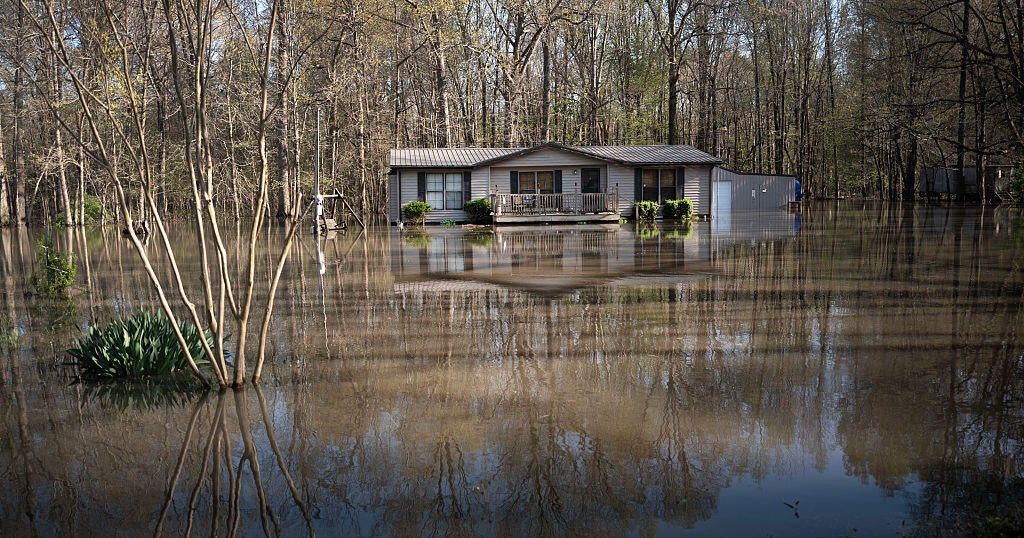
Climate change made recent flooding in Midwest, South more intense, report finds
8. May 2025
The deadly storms that tore through eight U.S. states in early April, killing at least 24 people, were made significantly worse by climate change, according to a study released this week.
Analysis from World Weather Attribution, a climate science group, found that human-caused global warming made the record-breaking downpours about 9% heavier. The powerful storms destroyed homes, roads and farmland.
From April 3 to April 6, the storms swept across the Midwest and South, dumping record amounts of rain across Kentucky, Tennessee, Arkansas, and other states. The study found the four days of rainfall was the heaviest ever recorded for the region. The storm’s intensity was fueled in part by unusually warm sea surface temperatures in the Gulf of Mexico, which were about 1.2 degrees Celsius (2.2 degrees Fahrenheit) hotter than normal due to climate change, the study determined.
According to the WWA analysis, this made the storms 14 times more likely.
Getty Images
The researchers said that while strong forecasts and early warnings likely reduced the scope of the damage, they worry about the impact of ongoing staff shortages at the National Weather Service.
Many of its field offices are strained, with nearly half of those offices now facing vacancy rates over 20%, and 30 offices operating without a senior meteorologist, according to Fredi Otto, one of the authors of the report, a co-founder of World Weather Attribution, and a senior lecturer in climate science at the Grantham Institute in Imperial College London.
These offices are responsible for issuing real-time warnings and coordinating with emergency management to keep communities safe.
The strain on insurance markets is also becoming clear as climate change drives more frequent and severe weather. Homeowners in high-risk areas are already seeing their insurance costs rise sharply as companies adjust to the growing risk.
“We estimate that the top 20% of riskiest zip codes have seen insurance premiums go up by $1,100 on average from 2020 to 2024,” said report co-author Ben Keys, a professor of real estate and finance at the University of Pennsylvania’s Wharton School, on a call with reporters.
Without a rapid shift away from fossil fuels, extreme weather is expected to become even more common and intense, researchers said.
According to the study, if global warming reaches 2.6 degrees Celsius (4.7 degrees Fahrenheit) — which researchers with World Weather Attribution expected by the year 2100 under current policies — four-day rainfall events like those seen in early April could become another 7% more intense and twice as likely.
“It’s really a moment for us to understand what this means not only now but for the future,” said study co-author Shel Winkley, a weather and climate engagement specialist with nonprofit news group Climate Central, on the call. “What does that mean for these areas that are seeing back-to-back events? What does that mean for how we build, or where we’re rebuilding, or if we rebuild? Is this going to be a place that’s livable in the future? And if it is, how do we make sure that it’s livable and safe?”
